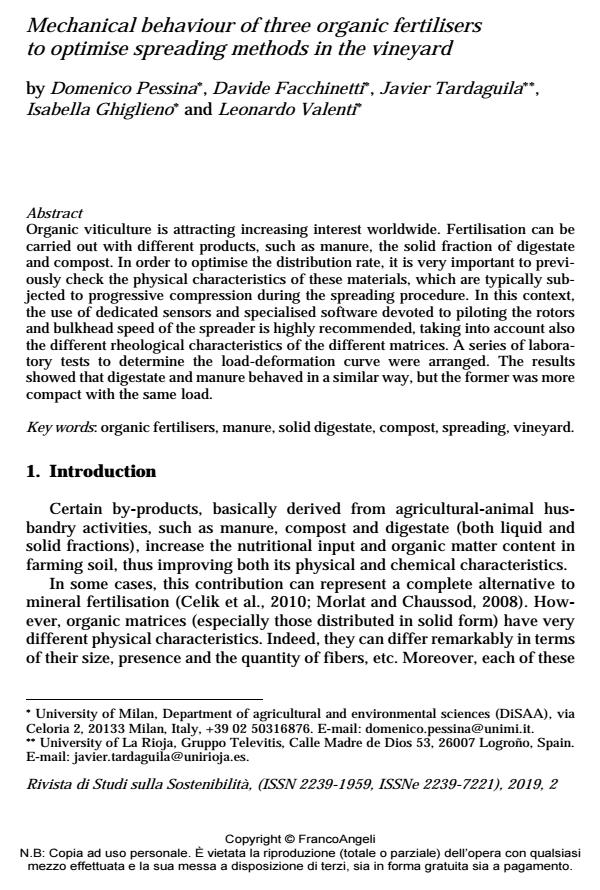Mechanical behaviour of three organic fertilisers to optimise spreading methods in the vineyard
Journal title RIVISTA DI STUDI SULLA SOSTENIBILITA'
Author/s Domenico Pessina, Davide Facchinetti, Javier Tardaguila, Isabella Ghiglieno, Leonardo Valenti
Publishing Year 2020 Issue 2019/2 Suppl.
Language English Pages 16 P. 375-390 File size 407 KB
DOI 10.3280/RISS2019-002-S1024
DOI is like a bar code for intellectual property: to have more infomation
click here
Below, you can see the article first page
If you want to buy this article in PDF format, you can do it, following the instructions to buy download credits

FrancoAngeli is member of Publishers International Linking Association, Inc (PILA), a not-for-profit association which run the CrossRef service enabling links to and from online scholarly content.
Organic viticulture is attracting increasing interest worldwide. Fertilisation can be carried out with different products, such as manure, the solid fraction of digestate and compost. In order to optimise the distribution rate, it is very important to previously check the physical characteristics of these materials, which are typically subjected to progressive compression during the spreading procedure. In this context, the use of dedicated sensors and specialised software devoted to piloting the rotors and bulkhead speed of the spreader is highly recommended, taking into account also the different rheological characteristics of the different matrices. A series of laboratory tests to determine the load-deformation curve were arranged. The results showed that digestate and manure behaved in a similar way, but the former was more compact with the same load.
Keywords: Organic fertilisers, manure, solid digestate, compost, spreading, vineyard.
Domenico Pessina, Davide Facchinetti, Javier Tardaguila, Isabella Ghiglieno, Leonardo Valenti, Mechanical behaviour of three organic fertilisers to optimise spreading methods in the vineyard in "RIVISTA DI STUDI SULLA SOSTENIBILITA'" 2 Suppl./2019, pp 375-390, DOI: 10.3280/RISS2019-002-S1024